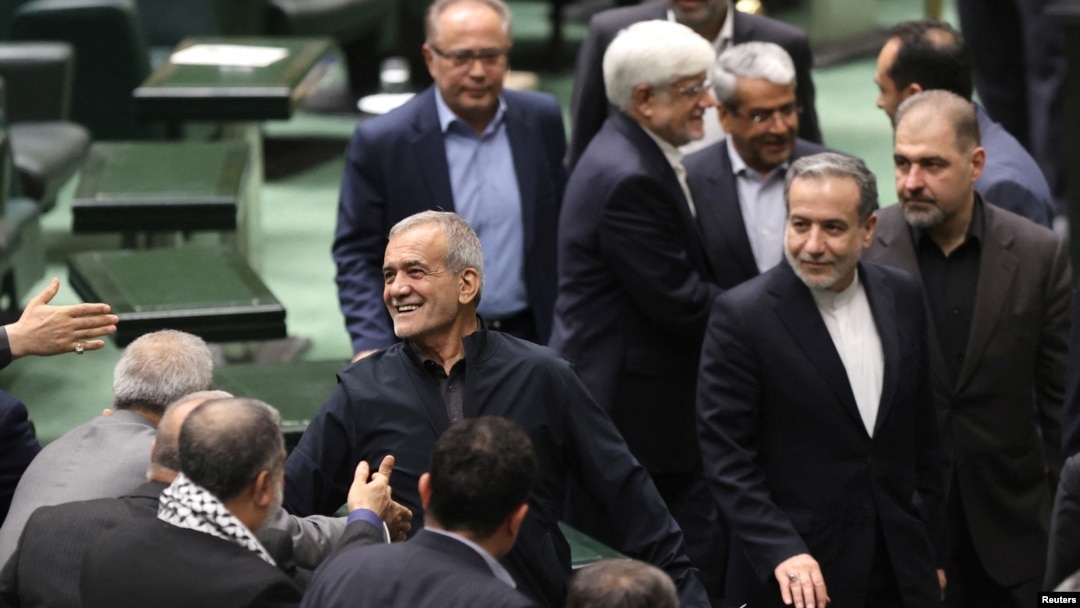When Iran’s reformist President Masud Pezeshkian submitted nominees for his 19-member Cabinet, many expected the hard-line parliament to reject at least some of his picks.
But in a rare move, lawmakers accepted the entire slate of ministers without a change, the first time a president has managed the feat in over two decades.
Pezeshkian hailed the move as a win for consensus in the divided country. But critics said the unanimous approval of his cabinet showed the limits of the president’s powers in Iran’s clerically dominated political system.
That is because Pezeshkian, addressing parliament before they voted on his nominees, said that the names were selected in “coordination” with Supreme Leader Ayatollah Ali Khamenei and preapproved by him.
Some Iranians saw Pezeshkian’s comments as an admission that the government is controlled by the supreme leader, who has the final say on all important matters of the state.
SEE ALSO: 'Reformist Loyalist' Masud Pezeshkian Is Iran's New President. Here's What To Expect.Hamid Aboutalebi, a former Iranian ambassador to Australia, said Pezeshkian may have “won the battle in parliament” but had “lost [Iran’s] century-long war for constitutionalism and republicanism.”
Some Iranian social media users said the presidency had lost all legitimacy and Pezeshkian was effectively a prime minister reporting to Khamenei.
“Get rid of this meaningless position of president and appoint a prime minister,” said political activist Hossein Razzaq.
Razzaq added that Khamenei should pick the head of government so that public funds are not spent on holding “ridiculous elections for show" in Iran, where votes are tightly controlled.
In many countries, including Iran, a president is elected by the people. A prime minister, a role that does not exist in Iran, is typically chosen by parliament or the head of state.
Some Iranians argued that Khamenei had finally realized what they said was his yearslong goal of abolishing the presidency and installing a prime minister, arguing that in Pezeshkian, he had accomplished it without the need to change the constitution.
In 2011, Khamenei said there would be “nothing wrong in changing” the system of government if “one day in the distant future it is felt that a parliamentary system is better than a presidential system for appointing officials.”
Getting rid of the presidency would further widen Khamenei’s powers.
Iran abolished the position of prime minister in 1989, a decade after the Islamic Revolution. The prime minister’s duties were divided between the president and the newly established position of first vice-president.
Under the Islamic republic, the prime minister was nominated by the president and approved by parliament. He served as the head of the government.


